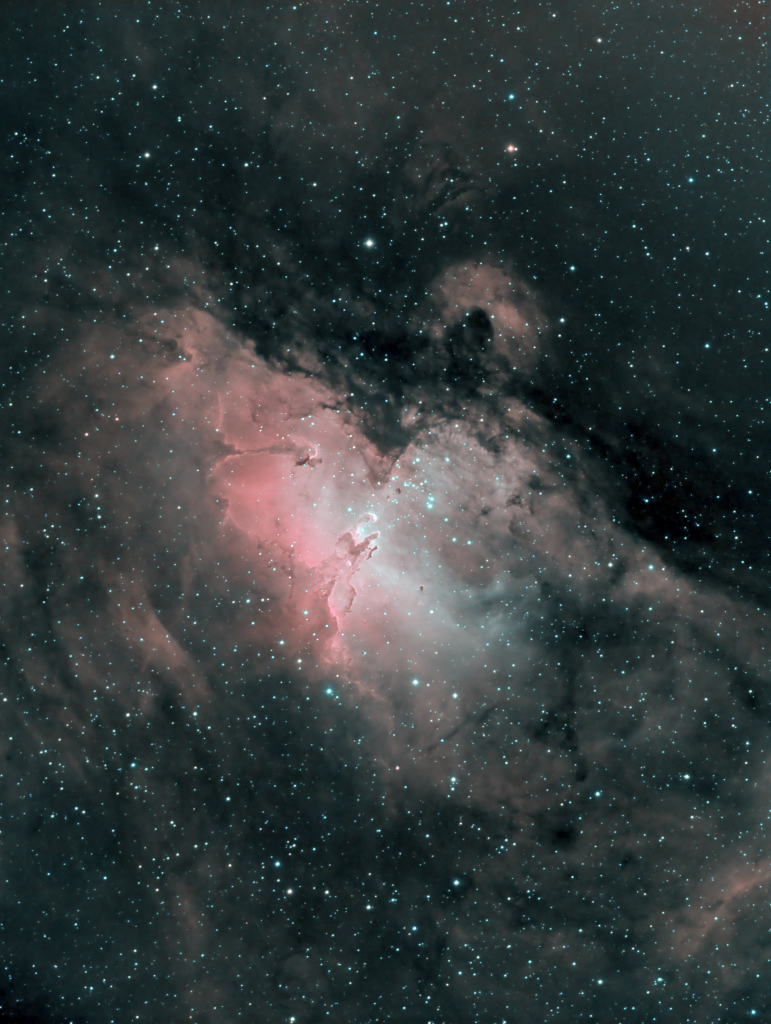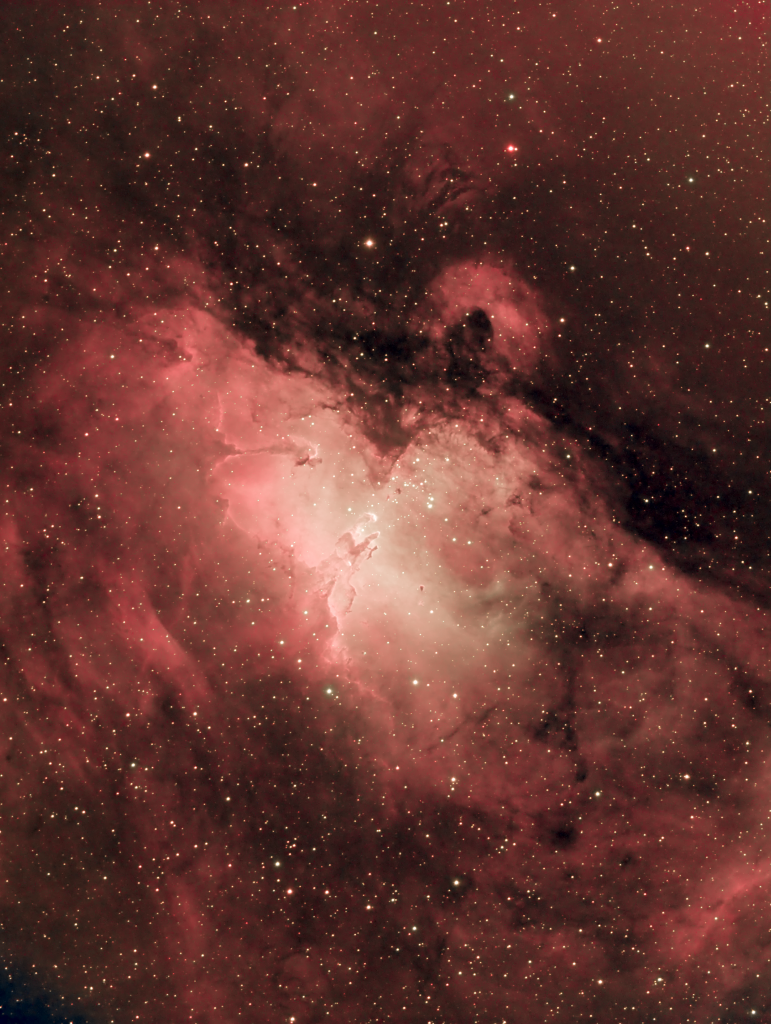
Similar Posts

The Bubble Nebula, take… whatever
Every year I try and do a better job of capturing and processing the Bubble Nebula in Cassiopeia. Here’s this year’s attempt. The Bubble Nebula is one of my favorite objects. Not only is it interesting scientifically (the bubble is the stellar wind of a hot O-type star blowing away the surrounding gases,) it’s also…

Comet C/2022 E3 (ZTF)
This comet will reach its brightest point a couple of weeks from now, but the skies were clear this morning so I figured I should go for it while I can! The tail’s not as pronounced as I hoped, and processing is a bit sloppy in a couple of spots. But hey, it’s a comet….

The “Christmas Star?” Not really.
On December 21, 2020, something really special happened in the sky: Jupiter and Saturn had an approach so close that it only happens every 800 years or so. They were so close in the sky that to the unaided eye, they looked like a single, bright star. This led many to proclaim it to be…

Revisiting the Needle Galaxy
This edge-on spiral is around 40 million light-years away within the constellation Coma Berenices. Lots of satellite and background galaxies to explore around it! Zoom in, and travel back in time – hundreds of millions of years.

Our new observatory!
Our new house has plenty of land, reasonably dark skies, and a reasonable homeowner’s association… so of course I had to try building an observatory! It may sound crazy, but it does offer a lot of advantages: I no longer have to set up my telescope, wait for dark, polar align it, and run a…

Summertime weather hiatus…
Yeah, it’s been a couple of months since we’ve done a live star party online, or posted any new pictures. That’s just summertime in Central Florida for you – it’s been too cloudy to do any imaging or observing. The skies should start clearing up more in a couple of months, and we have every…


